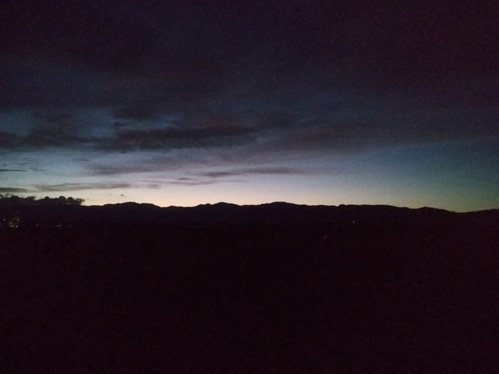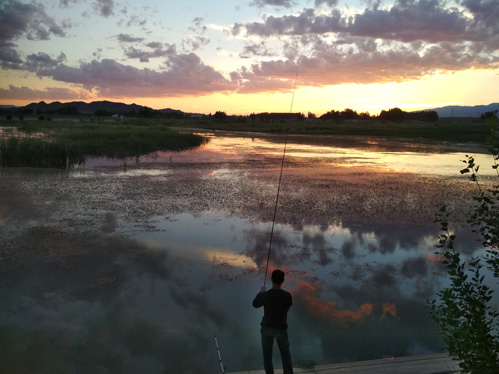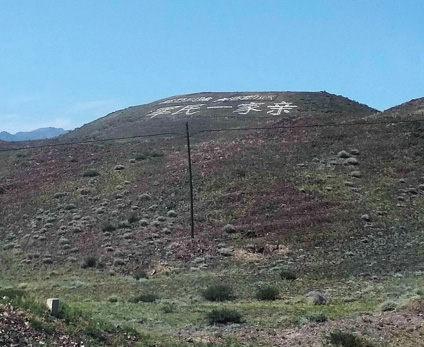Anthropology is about people, peopled places, and human innovation. Landscapes have long been a fascination of anthropologists, particularly due to their political characteristics. This series of landscape photos attempt to illustrate the political power over the people who populate these mountain landscapes on the Chinese frontier.
My fieldwork took place on the border between China and Kazakhstan in Northern Xinjiang and concentrated in large part on ‘cultural construction’ policies in a vast yet sparsely populated area known as Hoboksar Mongolian Autonomous County. Though it covers an immense area—nearly twice the area of Northern Ireland—it has a population of fewer than sixty thousand people. Among the pastoral people of Hoboksar County, landscapes play a significant part in daily life, and indeed also in local cosmology. Politically embossed landscapes help to define the lives of ordinary people and have become ingrained fragments of local life. While most tacitly accept, and indeed occasionally support its existence, the majority of the citizenry are for the most part only semi-conscious of its presence in their lives.
Photo (1) 
“Xinjiang Time”: The People’s Republic of China adheres to a national time zone and governs all regions of China on a single Beijing time zone. Xinjiang is the furthest provincial-level region from Beijing, and in general, has a 2-3 hour daylight time difference from Beijing. Hoboksar is located at the edge of Xinjiang and this photo of twilight illustrates the colonizing power of time in people’s lives, where daylight is still visible until nearly 11 pm. Local Xinjiang people distinguish between ‘Beijing time’ and their own local ‘Xinjiang time’ which to this day remains unrecognized by officials.
Photo (2) 
“Townification”: Hoboksar was historically a semi-arid pastoral region, but through recent “townification” policies that encourage development in small town centers, nearly half of Hoboksar’s population has been settled in the county seat. This is a photo of a water reservoir carved out near the town to meet the needs of the recently settled pastoralists and ‘floating population’ there. It at once symbolizes the potential for an urban lifestyle, and also the end of a pastoral one. A Han migrant can be seen fishing in the reservoir.
Photo (3) 
“One Family”: Hoboksar is a border region and is therefore closed to outsiders. The Border Guard administered by the People’s Liberation Army is stationed throughout.
NOTE: many apologies, due to my special situation, some of the photos that I took in the pastures were taken with a small, easily concealable camera. However, that camera didn’t have especially good quality. Photo 3 is a bit pixelated.
